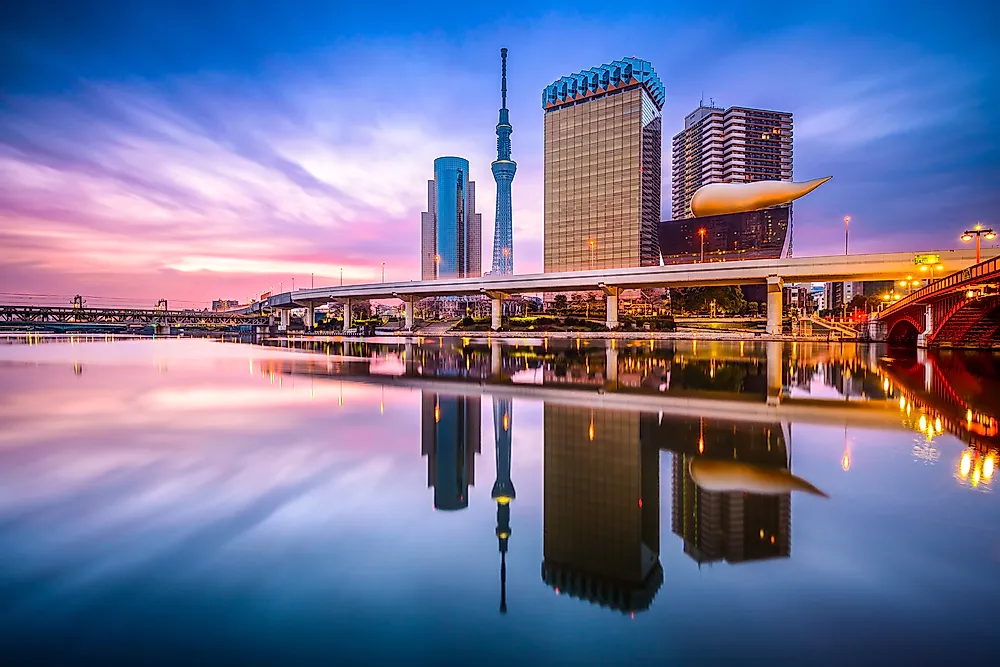Largest Cities In Asia

Asia is the most populated continent in the world. The countries with the highest populations include China, India, Indonesia, Pakistan, the Philippines, and Japan. At present, it is estimated that around 4.4 billion people people current live on the Asian continent, which translates into almost 60% of the world’s total population. With a median age estimated to be 30 and a total fertility rate of 2.2 births per woman, it seems unlikely that the Asian population growth rate will slow down significantly in the coming years. Recent estimates even predict that the Earth’s population will rise to a whopping eight billion people by the year 2024.
Most Populous Cities in Asia
Numbers Dipping In Japan
Half of the most populous cities in Asia are located in either Japan or China, with the largest urban centers being Tokyo and Osaka in Japan, and Shanghai, Beijing, and Guangzhou in China. Currently, however, Japan is actually experiencing a population decline, which has been attributed to such factors as a lack of immigration and a lowering of the domestic birth rate.
Family Planning In China
China adopted a one child per family policy in the late 1970s in order to curtail its booming population growth. Among the many unintended results of Chinese family planning regulations have included increased rates of infanticide and abortions (especially for the purposes of sex selection), as well as a gender imbalance. Despite its status as the most populous country in the world, in 2014 China began revising its one child policy, allowing some couples to have two children.
The Dark Side of Population Growth
The consequences of Asia’s high population and ongoing growths rates can be seen in various aspects of life, including in relation to social, economic, and environmental conditions. Issues such as urban sprawl, increased stress on natural resources, industrialization, growing rates of poverty, and increased energy usage, as well as higher pollution outputs, are all connected to population growth. All across Asia, large numbers of people are also moving out of rural areas and into large cities in search of work and a better quality of living.
Delhi: A Big City With Big Problems
Delhi, India serves as an example of a city that has been significantly effected by rises in population growth. According to a report in The Times of India, more than 50% of the residents currently living in Delhi reside in its “slums”. These populations often lack even the most of basic of services, such as running water, electricity, and toilets. The same report stated that the city produces over 7,000 metric tons of garbage every single day. Because of factors such as poor sanitation, illnesses spread quickly and disease is common among people living in slums in Delhi and elsewhere. Other consequences of Delhi’s population of 25 million people include dangerous levels of water and air pollution. A study by the World Health Organization found that Delhi has the unfortunate distinction of being the most polluted urban center in the entire world.
Will There Be Continued Growth Into The Future?
Because of concerns over increasing populations and growth rates, many Asian countries have stepped up their efforts aimed at reducing or limiting such growth. With this in mind, an emphasis has been placed on providing citizens with education, as well as access to a variety of birth control methods and family planning practices. A study conducted by the UN predicts that by the year 2050 the population of Asia will reach 5.3 billion. It’s also expected that in the not too distant future a small handful of countries, including India, Pakistan, and China, will be home to 50% of the earth’s total population. Worldwide life expectancy rates are also predicted to continue rising, giving rise to increased elderly populations as well.
Largest Cities In Asia By Population
| Rank | City | Country | Metro Population (Millions) |
|---|---|---|---|
| 1 | Tokyo | Japan | 38.2 |
| 2 | Delhi | India | 27.1 |
| 3 | Shanghai | China | 25.2 |
| 4 | Beijing | China | 22.0 |
| 5 | Mumbai | India | 21.6 |
| 6 | Osaka | Japan | 20.4 |
| 7 | Dhaka | Bangladesh | 18.9 |
| 8 | Karachi | Pakistan | 17.6 |
| 9 | Kolkata | India | 15.1 |
| 10 | Chongqing | China | 14.1 |
| 11 | Guangzhou | China | 13.6 |
| 12 | Manila | Philippines | 13.3 |
| 13 | Tianjin | China | 11.9 |
| 14 | Shenzhen | China | 10.9 |
| 15 | Bangalore | India | 10.8 |
| 16 | Jakarta | Indonesia | 10.6 |
| 17 | Chennai | India | 10.4 |
| 18 | Seoul | South Korea | 9.8 |
| 19 | Bangkok | Thailand | 9.6 |
| 20 | Hyderabad | India | 9.4 |











